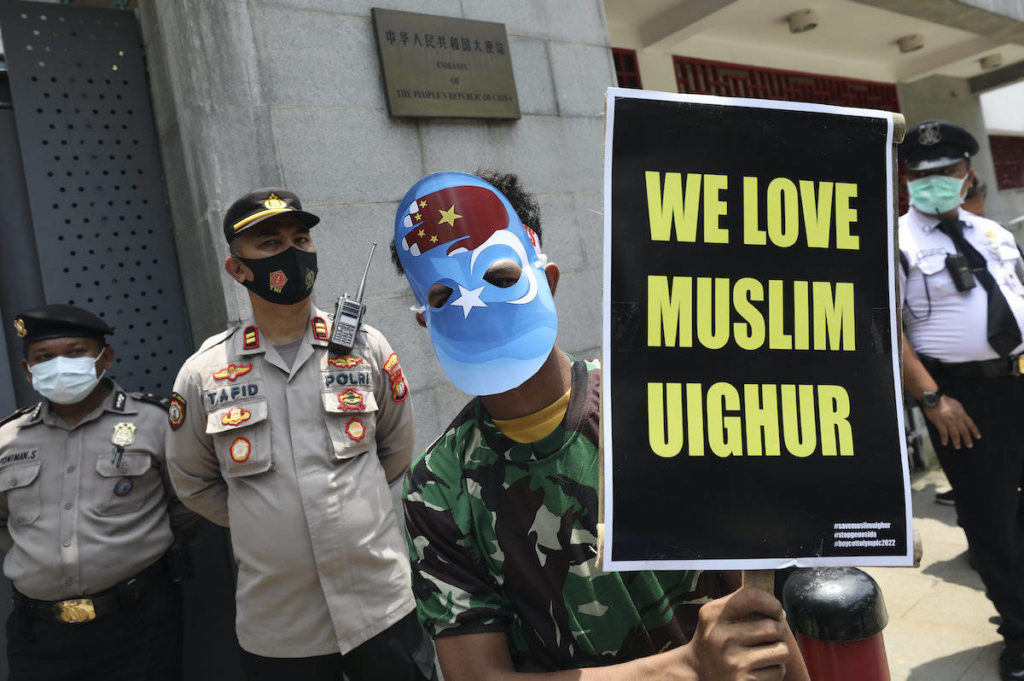Canadians across the country walking for a cause and to heal – Vancouver Island Free Daily
By placing one foot in entrance of the opposite, generally slowly and generally at sooner paces, Bilal Malik desperately hopes the federal government will hearken to his phrases.
The 36-year-old is nearing the top of a 15-day, 380-kilometer “freedom march” from Toronto to the steps of Parliament Hill in Ottawa.
He desires to persuade the federal government of Prime Minister Justin Trudeau to pronounce the systemic abuse and human rights violations in opposition to ethnically Muslim Uyghurs in China as genocide.
Malik is one among a number of Canadians at the moment strolling a whole bunch of miles up and down hills, via cities, and previous villages and farms to ship a message.
“I hope the stroll will make even a little bit, even one % distinction … you need to do one thing,” says Malik, who has not been capable of attain his household for 3 years since he moved to Canada from China’s northwestern province of Xinjiang.
China has confronted worldwide criticism and sanctions since experiences of mass arrests of greater than 1,000,000 individuals and compelled sterilizations surfaced.
In February parliament voted to declare China’s remedy of its Uighur minority as genocide. The movement was supported by all opposition events, however Trudeau and most of his cupboard members abstained.
Malik says his stroll is all he can do to honor his household, elevate Canadians, and persuade Trudeau to “do the precise factor”.
Peaceable disagreements from strolling have been happening for many years, stated Ronald Stagg, a historical past professor at Ryerson College in Toronto.
“It is somebody who says, ‘I’ve to do my half. I really feel like I’ve to say one thing. I really feel like I’ve to protest in opposition to it or for it, so I am going to simply do it, ”Stagg stated. “Even when it would not work.”
Malik stated conversations he had with Canadians en route have been value each second of his stroll.
“It isn’t a giant sacrifice. It is a image. Now we have to do one thing for our group. “
Stagg stated generally individuals’s walks deal with a particular topic. At different instances they spotlight normal grievances of marginalized teams which have been oppressed all through their historical past.
Lorraine Netro and Jacqueline Shorty Whitehorse additionally stroll. Their 2,000-mile hike from Whitehorse, Yukon, to Kamloops, BC, is about to honor the stays of a whole bunch of indigenous youngsters at former residential colleges.
A boarding faculty survivor in Prince Albert, Sask., Is greater than midway via her journey to Parliament Hill. In June Patricia Ballantyne started her “Stroll of Sorrow”. She plans to achieve Ottawa this month.
Trechelle Bunn, 21, organized a one-day stroll for about 70 individuals earlier this month. They walked 14 miles from the previous Birtle Indian Residential College to Birdtail Sioux First Nation, about 300 kilometers northwest of Winnipeg, to expertise the journey a whole bunch of Indigenous youngsters made once they escaped from boarding faculty.
“It was a very highly effective second to return to the place the place my grandparents have been kidnapped … after which for me and the survivors to go away faculty,” she stated.
The Canadian Encyclopedia says that strolling grew to become common as a type of peaceable dissent within the twentieth century when Mahatma Gandhi put ahead a doctrine of nonviolent civil disobedience to defy British rule. He wandered via India’s countryside for twenty-four days.
Many years later, impressed by Gandhi, Martin Luther King Jr. led 250,000 hikers from Selma to Montgomery, Alabama, risking arrest and violence as they tried to safe the precise to vote for blacks.
In Canada, Stagg stated, a whole bunch of individuals commonly gathered and generally walked to protest the Vietnam Battle. Very similar to the Sixties, the previous 20 years will likely be remembered for his or her walkers and protesters, he stated.
“We dwell in a time of nice social upheaval and every kind of issues have gotten identified.”
For Bunn, the stroll she organized was much less about defiance and extra about therapeutic.
“It was a really empowering and therapeutic journey for everybody who took half. Going residence and making it into our group, one thing that so a lot of our survivors and so many youngsters have been denied … it offers me goose bumps after I give it some thought. “
Fakiha Baig, the Canadian press
Like us on Fb and comply with us on Twitter.
Would you wish to assist native journalism? Donate right here.
Psychological well being
[ad_2]

